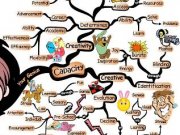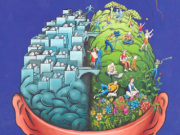
The term “team” is often used to refer to groups that meet over time to complete a project and then wind down (e.g., cross-functional teams) or is used to describe a group that operates solely as a team, with the role of leader alternating (self-directed work teams), or a traditional staff that meets as a group on an ongoing basis to discuss operating issues. In this chapter, when the word team is used, it is a synonym for “teamwork.
Many departments do not operate as teams—that is, “practice teamwork.” Members may talk to each other at the printer or over lunch, and their work efforts may be designed to meet the overarching objectives of the department, but these employees’ work on a day-to-day basis is largely done as individuals, which is unfortunate, for many business experts now believe that teamwork is critical to organization productivity and profitability.
Downsizing, right-sizing, reorganizing, reengineering—all are indications of the pressure on organizations to reduce the size of their workforces. The only way to cope with this need to do more with less is by working cooperatively in an environment of respect, drawing on all the resources available to get the job done.
When people work together in an atmosphere of trust and accountability toward a common goal, they put aside turf issues and politics and focus on the tasks to be done. This focus of resources overcomes barriers, helps to identify new opportunities, and builds a momentum that leads to three major bottom-line benefits:
1Better problem solving
2. Greater productivity
3. More effective use of resources
Jon Katzenbach, author of The Wisdom of Teams, observes, “There is virtually no environment in which teams—if done right—can’t have a measurable impact on the performance of an organization.”
Unless you have built a sense of teamwork among your employees, they will have no shared performance goals, no joint work efforts, no mutual accountability, which can increase productivity. There is also a group of softer benefits of teamwork that greatly enhances the workplace:
1People enjoy working together and teamwork satisfies a need for socialization.
2. Working together helps people grow as they learn from each other and develop important skills.
3. Working together toward a common goal provides a sense of purpose that is motivating and fulfilling.
Need I say more about the benefits of teamwork
Team Characteristics
Productive teams usually share many characteristics. They have a common purpose each member is committed to. They stay involved until the objective is completed. They care about each other: and, in keeping with this, they are concerned about how their actions and attitudes affect each other. They listen to each other and respect all points-of-view, and are sensitive to each other’s needs. And their leaders encourage everyone’s participation in the decisions to be made.
If you looked into groups of employees who work as teams, you would see these characteristics or traits:
Openness and candor. The more reluctant people are to express their feelings and be honest with each other, the more likely suspicion and distrust will exist. When real teamwork is present, team members, because they basically trust each other, are more open and honest with each other.
Acceptance of assignments. It might make each of us happier if we could choose all our work. However, this is unrealistic. Still, when real teamwork exists, team members willingly accept assignments. Motivated by peer pressure, they also work hard to get their jobs done right the first time and to meet deadlines.
Understood and accepted goals. A team needs purpose, direction, and goals. These are accepted by the members of the team, and they work collaboratively to achieve them. Their manager has explained the importance of achievement of these goals in the bigger, corporate picture, and team members understand why it is so important for the goals to be reached. Committed to their accomplishment, they assist one another to make them a reality.
Progress and results assessed. Teamwork requires that members be results-directed as opposed to process-oriented. Their focus is on their objectives, and their activities are directed toward those goals. Periodically, under direction of a leader, the team assesses its progress. That knowledge serves to guide future team action. This includes identification of barriers and what can be done to rid the team of them.
Shared trust. In a healthy team, members essentially trust one another. Despite occasional conflict, members get along well and enjoy each other’s company. They cooperate and get the work done.
Involvement and participation. There are three general types of people in the world: those who do not know or care about what is happening, those who watch what others do, and those who make things happen. Teamwork requires that members be involved in their work and participate in team activities. What they say and do counts for something.
Many work environments in which teamwork is practiced involve team members in decision making, practicing participative management.
The Loner
How do you handle a talented loner or nonteam-player on your team
You may not have someone like this on your staff yet but you probably will at one point in your career, that is, have a territorial, introverted, or us-versus-them worker who simply doesn’t want to be a team player. The individual can drag down the team effort, but he or she is too valuable to let go. What can you do with this loner who exhibits anti-team behavior
You must either create a niche that this non-mainstreamer can fill successfully and productively or encourage the individual to modify his or her behavior for the sake of the other members of the team.
To change the individual’s anti-team behavior, you might play up peer pressure. Although loners may march to the sound of a different drummer, explain that the behavior can cause ill will and negative feelings from other team members. A change would move this person closer to the center of the group, reduce co-workers’ resentment, and help to eliminate the uncomfortable us-versus-them attitude that may exist now.
You may also point out the reality of the situation. While praising the individual’s experience, special skills, and length of service, emphasize that everyone is expected to embrace a one-for-all, all-for-one attitude. Anything less threatens the success of the entire work unit and will jeopardize the headstrong employee’s job security in a corporate culture that revolves around teamw












